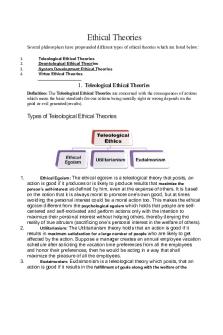Geopolitical Theories Heartland Rimland PDF

| Title | Geopolitical Theories Heartland Rimland |
|---|---|
| Author | Gungun Chaudhary |
| Course | Geography honours. |
| Institution | University of Delhi |
| Pages | 2 |
| File Size | 238.6 KB |
| File Type | |
| Total Downloads | 23 |
| Total Views | 131 |
Summary
Political geography...
Description
Geopolitical Theories: Heartland, Rimland, & Organic State
Name:_________________________
Directions: Read and take notes on the following geopolitical theories.
The Heartland Theory Definition - In 1904, Sir Halford Mackinder published the Heartland theory. The theory proposed that whoever controls Eastern Europe controls the Heartland. It also supported the concept of world dominance. Explanation - A more revised version explains that whoever controls the heartland, controls the world island. Whoever controls the World Island, will soon rule the world. In other words, the group or nation who dominates the heartland, can then extend its domination over a far wider area. The heartland has primarily been Central Asia, the high seas, and Eurasia. Example - The Nazi party was in favor of the concept during World War II. The idea was very popular with the party, and they sought to achieve it. Also, the theory was accepted by the Soviet Union during the Cold War. Each nation made great territorial strides toward the heartland, but to no avail.
The Rimland Theory Definition - In 1942, Nichols Spyman created a theory which countered Mackinder’s Heartland theory. Spyman stated that Eurasia’s rimland, the coastal areas, is the key to controlling the World Island. Explanation - The rimland contains the Heartland. Whoever would control the rimland, would eventually control the World Island. Whoever would control the World Island would soon control the world. Example - His theory was influential mainly during the Cold War. The Soviet Union desired to control the rimland around them. If accomplished, the Soviet Union would control the heartland, rimland, and the World Island.
Geopolitical Theories: Heartland, Rimland, & Organic State
Name:_________________________
The Organic State Theory The organic theory, along with the Heartland and Rimland theories, falls under political geography, otherwise known as geopolitics. Geopolitics refers to how politics plays a role in geography and influences different geographic attributes such as political borders. The term geopolitics once had a negative connotation, due to the organic theory, and in this paper, we shall discuss the reason for this. It was theorized in 1897 by Friedrich Ratzel, a nineteenth-century German geographer and ethnographer. The name “organic theory” comes from Ratzel’s assertion that political entities, such as countries, behave in a way not too dissimilar from that of living organisms. More specifically, to survive, a political entity requires nourishment to gain political power. This nourishment came in the form of a term he coined called Lebensraum, which translates from German to “living space.” He was referring to the physical territory. Therefore, we can say that organic theory states that political entities continually seek nourishment in the form of gaining territories to survive in the same way that a living organism seeks nourishment from food to survive. Essentially, the analogy is that food for an organism is territory for a country and the more territory that it conquers the more that the particular political entity can sustain and preserve itself. As a result, the organic theory implies that for a political entity to maintain control, it invariably needs to seek out Lebensraum and go out and conquer all the territory that it possibly can, and complacency is not an option. Otherwise, it risks its security and is always vulnerable to attacks because other political entities also behave in this organic way and will try to conquer as much territory as they can as well for the purpose of self-preservation. You can compare it to the competition among living organisms for the scarce resource of food, which is their form of nourishment.
Assignment:
Develop a comparative argument that weighs the pros and cons of both the Heartland and Rimland theories.
....
Similar Free PDFs

Heartland and Rimland Theory
- 21 Pages

Sociological Theories
- 4 Pages

Ethical theories
- 6 Pages

Motivation theories
- 24 Pages

COMPLIANCE THEORIES
- 10 Pages

Communication theories
- 7 Pages

Nursing Theories
- 64 Pages

Leadership Theories
- 11 Pages

Theories Intermed
- 5 Pages

Overview & Theories
- 7 Pages

ORGANIZATIONAL THEORIES
- 39 Pages

Criminology Theories
- 1 Pages

Leadership Theories
- 6 Pages
Popular Institutions
- Tinajero National High School - Annex
- Politeknik Caltex Riau
- Yokohama City University
- SGT University
- University of Al-Qadisiyah
- Divine Word College of Vigan
- Techniek College Rotterdam
- Universidade de Santiago
- Universiti Teknologi MARA Cawangan Johor Kampus Pasir Gudang
- Poltekkes Kemenkes Yogyakarta
- Baguio City National High School
- Colegio san marcos
- preparatoria uno
- Centro de Bachillerato Tecnológico Industrial y de Servicios No. 107
- Dalian Maritime University
- Quang Trung Secondary School
- Colegio Tecnológico en Informática
- Corporación Regional de Educación Superior
- Grupo CEDVA
- Dar Al Uloom University
- Centro de Estudios Preuniversitarios de la Universidad Nacional de Ingeniería
- 上智大学
- Aakash International School, Nuna Majara
- San Felipe Neri Catholic School
- Kang Chiao International School - New Taipei City
- Misamis Occidental National High School
- Institución Educativa Escuela Normal Juan Ladrilleros
- Kolehiyo ng Pantukan
- Batanes State College
- Instituto Continental
- Sekolah Menengah Kejuruan Kesehatan Kaltara (Tarakan)
- Colegio de La Inmaculada Concepcion - Cebu


